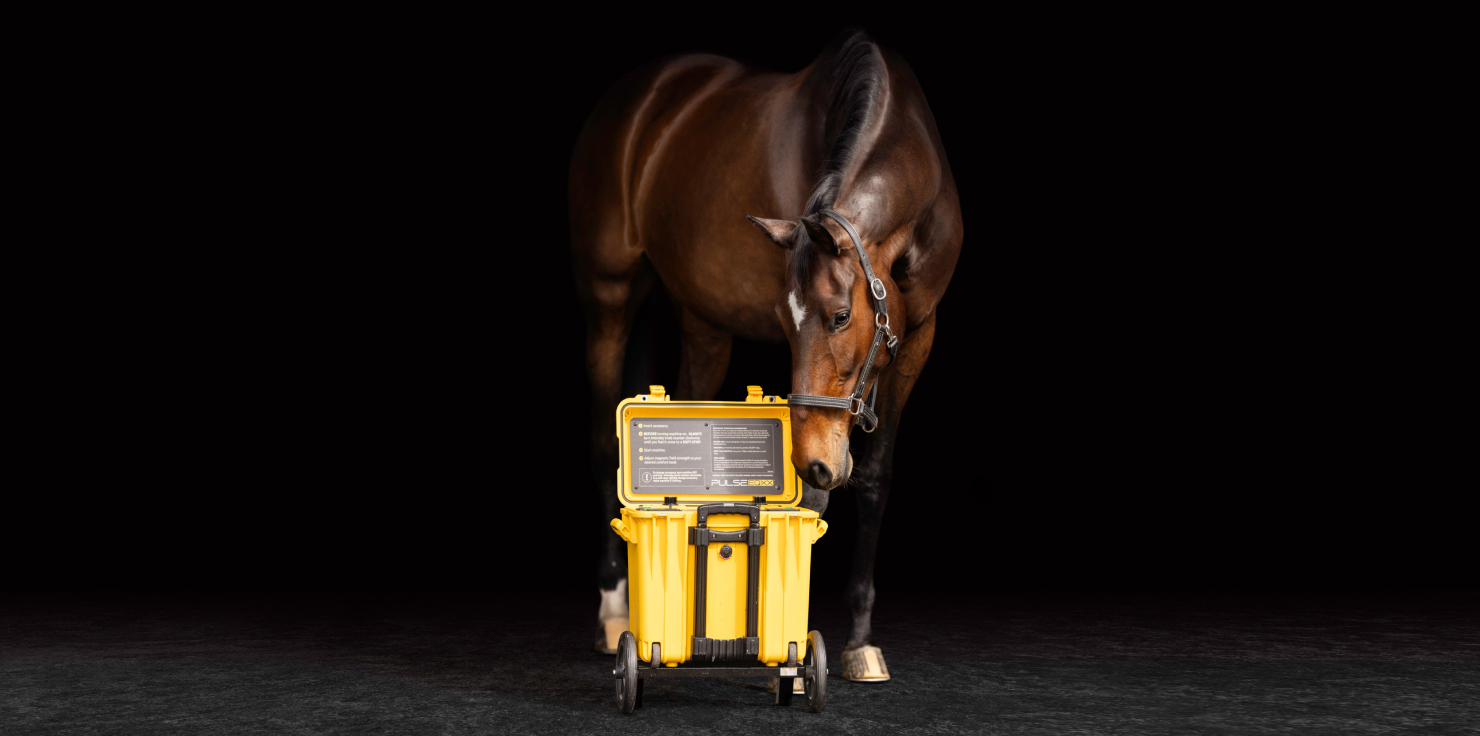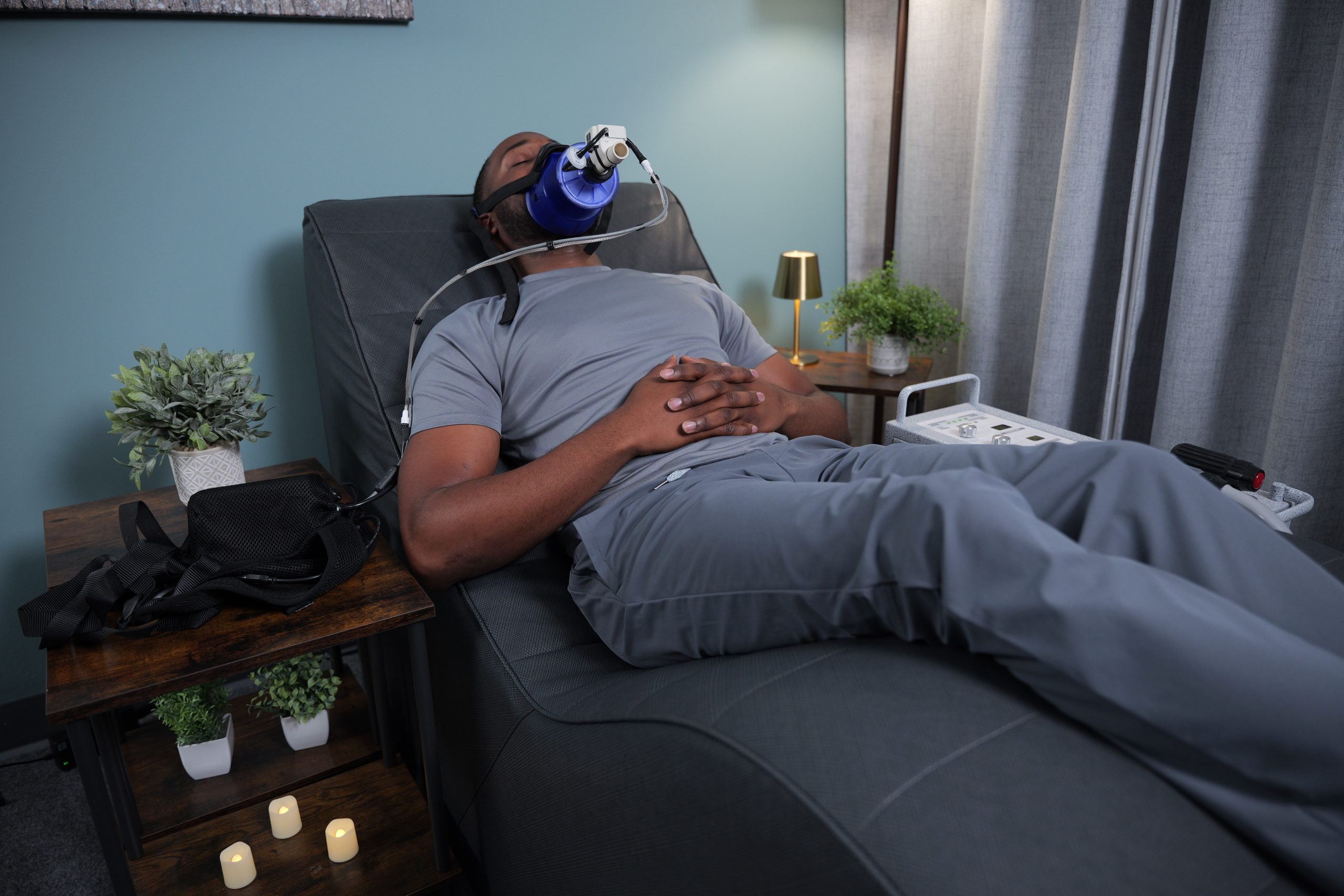Have you heard about PEMF therapy for horses?
This innovative approach to equine wellness is gaining traction among horse owners and professionals alike. But what exactly is PEMF, and how might it benefit your horse?
PEMF stands for pulsed electromagnetic field therapy. It’s a revolutionary wellness modality that utilizes soothing electromagnetic pulses to stimulate and exercise the body’s cells. These pulses can support the body’s natural self-healing and self-regulating abilities.
PEMF has been used for decades to support human wellness. However, it has also been shown to be beneficial for animals, including horses.
In this article, we’ll delve deeper into the science behind PEMF and explore its potential benefits for horses. We’ll also discuss how Pulse PEMF can help you incorporate this innovative therapy into your horse’s care routine.
What Are The Potential Benefits of PEMF Therapy For Horses?
Let’s explore some of the potential PEMF therapy benefits for horses.
Optimize Wellness Non-Invasively
PEMF is a safe, non-invasive modality that generates energy naturally at the cellular level. Developed specifically for animals, our PEMF Loops apply electromagnetic pulses to the body without putting anything under the skin. Anatomically, the amplification of natural energy encourages their bodies to function more effectively for overall wellness.
Increase Range of Motion
Studies on animal subjects associate PEMF with decreased inflammation and increased circulation. This may support the extension of muscle fibers for a higher active range of motion, and a smoother, longer stride. For competitive horses, this means the ability to comfortably utilize boosted natural energy for optimal performance, pursuit, and play!
Generate Natural Cellular Energy
The body’s cells are similar to batteries. They hold a charge and can become depleted of energy over time by environmental stressors. PEMF applies energy directly to the cell. Therefore, the body’s holistic nature may use that cellular energy as a catalyst for full-body energy.
Natural Support for Healthy Joint and Cartilage Function
Studies on animal subjects have shown that PEMF may improve calcium and collagen production. This may contribute to increased circulation and range of motion. As the tissues lining joints deteriorate over time, PEMF may help aging horses produce these crucial nutrients their bodies need.
Assist with Muscle Fatigue & Discomfort After Exercise
Studies have shown that PEMF may trigger a decrease in perceived muscle soreness. This may minimize stall rest or downtime to keep animals active and happy. This, along with its effect on energy levels, makes PEMF the perfect complement to conditioning, working, and athletic horses.
Support General Relaxation
Animals often experience PEMF as a soothing, restorative modality. In fact, studies have shown that PEMF has the ability to stimulate the parasympathetic nervous system. (That’s the body’s “rest and digest” response).
How is PEMF Administered to Horses?

We’ve explored the potential benefits of PEMF therapy for horses. However, understanding how it works and how it’s administered is crucial. This section will delve into the mechanisms of PEMF at the cellular level. We’ll explore the different application methods and provide insights into typical session protocols and durations.
How Does PEMF Therapy Work?
Before diving into the specific application methods, it’s helpful to understand how PEMF works at the cellular level. Research suggests that PEMF may stimulate specific cellular processes that support the body’s self-healing functions.
For instance, PEMF supports the movement of charged particles within cells, called ions. This movement assists the cells to perform at their best ability. The electromagnetic field generated by PEMF may also temporarily increase the permeability of cell membranes. This allows essential nutrients and oxygen to enter the cell more readily. And, waste products may be removed more efficiently, promoting cellular health and function.
It’s important to note that the specific mechanisms by which PEMF exerts its effects are still being investigated. However, the potential for cellular-level interactions offers a glimpse into how this therapy might benefit horses.
Application Methods for Horses:
PEMF therapy for horses can be administered using various applicators. Each offers its own advantages and is best suited for targeting different areas of the body. Here’s a look at some common methods:
PEMF Wraps, Blankets, and Boots: Wraps and boots are designed to be secured around specific body parts, such as the legs, hooves, or shoulders. They offer support in more targeted areas. Blankets are designed to cover the entire horse or specific sections, such as the back and hindquarters. They offer broad-area care and are often used for general wellness purposes or post-workout recovery. Learn more about using PEMF therapy devices alongside horse blankets in this blog.
PEMF Coils: Coils are flexible applicators that can be positioned directly on the area requiring care. This allows for precise targeting of specific areas of concern. They are typically made of copper and feature non-invasive inductive antennas that make it easier to deliver targeted PEMF energy.
PEMF Loops: Loops come in various shapes and sizes. They are designed to create a concentrated electromagnetic field around a specific body part. They are particularly useful for targeting smaller areas, such as joints or hooves. Check out this blog to learn about different sizes of loops and which one is right for your horse.
The choice of applicator will depend on the specific needs of the horse and the area being targeted. It’s crucial to select the appropriate applicator size and ensure proper placement for optimal results.
Session Guidelines And Duration:
The frequency and duration of PEMF sessions for horses will vary depending on many factors. This could include individual needs, the intended benefit, and the severity of any conditions present. It’s essential to consult with a veterinarian or PEMF professional to determine the most appropriate plan for your horse.
Generally, PEMF sessions can range from 45 to 60 minutes. They may be recommended daily or several times per week for an initial period, followed by a maintenance schedule. It’s important to follow recommendations provided by your veterinarian or PEMF professional and monitor your horse’s response to PEMF.
Potential Side Effects of PEMF Therapy For Horses

While PEMF is generally considered safe for horses, it’s crucial to address potential side effects and ensure appropriate use. This section will discuss the likelihood of side effects and highlight important considerations. We’ll also emphasize the importance of consulting your veterinarian before starting any new therapy for your horse.
Is PEMF Therapy Safe for All Horses?
PEMF has been widely used in horses with minimal reported adverse effects. However, it’s essential to remember that no complementary intervention is entirely risk-free. Individual factors can influence how an animal responds to any treatment.
Are There Any Side Effects of PEMF Therapy in Horses?
Research suggests that mild and temporary side effects may occur in some horses following PEMF sessions. These are some common detox symptoms horses may experience:
- Runny noses and eyes
- Sneezing
- Shedding
- Light to moderate sweating
These side effects are usually short-lived, resolving within a few hours after a session, and typically do not require any intervention. It’s important to monitor your horse’s response to PEMF and consult your veterinarian if any concerns arise.
Important Considerations
While the reported side effects are typically mild and transient, it’s crucial to be aware of several important considerations. Here’s what to know before starting PEMF for your horse:
Pre-existing Conditions: PEMF may not be suitable for horses with specific pre-existing medical conditions. It’s essential to consult your veterinarian before starting PEMF, especially if your horse has:
- Electronic implanted devices: The electromagnetic field generated by PEMF therapy will interfere with the functioning of these devices, so PEMF is not recommended. It’s worth noting that if your horse has a microchip, it is safe for them to undergo PEMF.
- Active bleeding: PEMF therapy may increase blood flow, potentially worsening active bleeding. Do not use PEMF if your horse is actively bleeding.
- Colic: If your horse has colic or is undergoing colic treatment, PEMF should not be used.
- Cancer: Research on the interaction between PEMF therapy and cancer is ongoing. Consulting your veterinarian is crucial to discuss the potential risks and benefits for your horse’s specific case.
Pregnancy: The safety and efficacy of PEMF in pregnant mares haven’t been extensively studied. It’s advisable to consult your veterinarian before using PEMF therapy on a pregnant mare.
Usage and Application: Improper application, excessive usage, or using an incorrect applicator may potentially lead to unintended side effects. Always follow the specific recommendations and instructions provided by your veterinarian or qualified PEMF professional.
Individual Response: As with any complementary modality, individual responses to PEMF can vary. While most horses tolerate it well, it’s important to monitor your horse closely. Be attentive to any changes in their behavior or health after a session.
To conclude, PEMF offers a promising approach to promoting horse well-being. However, it’s important to be aware of potential side effects and ensure its appropriate use. To be on the safe side, always consult with your veterinarian before starting PEMF. They can assess your horse’s individual needs and address any potential concerns.
Where to Learn More and Find PEMF Therapy for Horses

Interested in incorporating PEMF into your horse’s wellness routine?
As the use of PEMF therapy for horses continues to evolve, ongoing research is expanding our understanding of its potential. Here are some resources where you can find more information and stay updated on the latest developments:
Horse Illustrated – PEMF Equine Therapy: This article provides a general overview of PEMF therapy for horses, explaining the concept, potential benefits, and considerations for use. Horse Illustrated is a great publication to keep up with the latest wellness developments in the equine world.
University of Tennessee Graduate Thesis – Pulsed Electromagnetic Field Therapy and its Applications and Usage in the Equine Industry: This thesis explores the potential of PEMF in the performance of the equine athlete. Additionally, it discusses PEMF’s various benefits for different challenges and its overall usage and applications. While it is a single academic study, it can offer insights into the potential mechanisms of PEMF.
Journal of Animal Science – Prevalence, Usage, and Perceptions of Pulsed Electromagnetic Field Therapy in the Equine Industry: This research article examines effects of PEMF on various aspects of horse health, including performance, physiology, and immune function. It provides a more in-depth analysis of the potential benefits of PEMF in horses.
California State University – The Evaluation Of Vasodilation And Stress Properties With The Application Of PEMF On The Equine Distal Limb: This project investigates the effectiveness of PEMF in managing injuries in horses. It discusses the potential treatment and rehabilitative ability of PEMF. While further research is needed, it offers insights into the potential application of PEMF for specific equine challenges.
It’s important to remember that these resources are a starting point for your own research and due diligence. Consulting with your veterinarian is crucial before making any decisions about using PEMF for your horse.
Once you have the green light from your veterinarian, find a Pulse PEMF professional near you by searching our location map.
Conclusion
To conclude, PEMF has emerged as a promising approach to promoting equine wellness. It offers a non-invasive, natural, and effective way to support your horse’s well-being.
Further research is ongoing to fully understand the mechanisms and long-term effects of PEMF therapy for horses. However, the initial evidence and anecdotal reports suggest it may be a valuable addition to your horse’s overall wellness routine.
We encourage you to delve deeper into the world of PEMF therapy for horses. If you have any questions or would like to learn more about our offerings, contact us today. Our knowledgeable team is here to help you find the perfect PEMF device to support your horse’s health and happiness!












